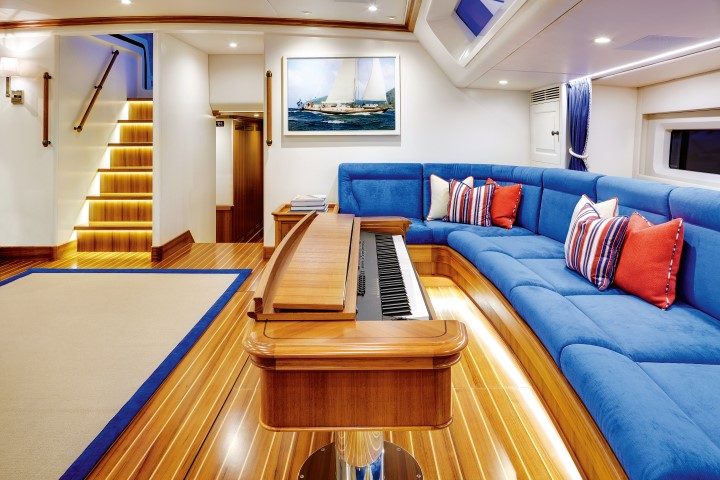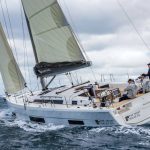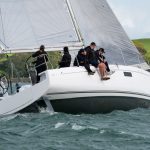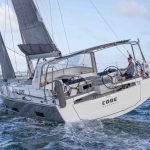‘Behemoth’ is a word which springs to mind or, perhaps more nautically, ‘leviathan’.
- Carbon fibre
- Built in New Zealand
- Easy handling
- Lifting keel
- Hydraulic sail controls
- Twin rudders
- Built for a serious sailor
- Needs only a small crew to sail
- Stylish and sumptuously-appointed
- True ocean wanderer
- Capable of 300-mile days



 This sail plan is a sensible ‘handling’ solution. A furling main/hanked staysail set-up offers fast, easy reefing options in mid-ocean. Harken supplied all the running rigging and sail-trimming falls to four imposing Harken winches positioned around the perimeter of the vast cockpit. Doyle built the sails and, optimising durability and performance, opted for Stratis GPc sails made from carbon technora.
This sail plan is a sensible ‘handling’ solution. A furling main/hanked staysail set-up offers fast, easy reefing options in mid-ocean. Harken supplied all the running rigging and sail-trimming falls to four imposing Harken winches positioned around the perimeter of the vast cockpit. Doyle built the sails and, optimising durability and performance, opted for Stratis GPc sails made from carbon technora.











